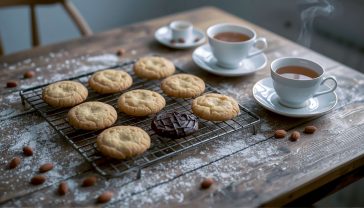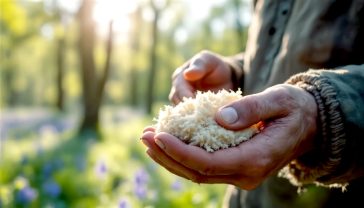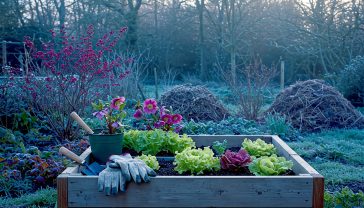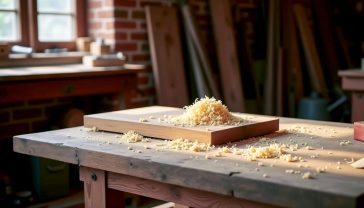The Great British Brew: Your Ultimate Guide to Afternoon and High Tea
Your definitive guide to the quintessential British tea experience. Learn the difference between Afternoon and High Tea, its history, and proper etiquette.

This post may contain affiliate links. If you make a purchase through these links, we may earn a commission at no additional cost to you.
There’s nothing quite so wonderfully, unapologetically British as a proper cup of tea. It’s more than just a drink; it’s a ritual, a comfort, a solution to most of life’s little problems. But beyond the humble cuppa lies a world of ceremony, tradition, and deliciousness: the iconic Afternoon Tea.
Mention it, and you’ll likely picture delicate finger sandwiches, fluffy scones piled high with jam and cream, and dainty cakes served on a tiered stand. It feels like a little slice of Downton Abbey, a throwback to a more elegant time. And you wouldn’t be wrong. But did you know there’s another, heartier tradition called High Tea?
Often, people mix them up, but they couldn’t be more different. One was designed for the posh parlours of the aristocracy, a light snack to bridge the long gap between lunch and a fashionably late dinner. The other was a substantial, hot meal for working families, served at the main dining table after a long day’s graft.
So, let’s put the kettle on, shall we? We’re about to take a deep dive into one of Britain’s most cherished traditions. We’ll uncover the stories behind these rituals, settle the great scone debate once and for all (jam or cream first?), and explore how a simple cup of tea became the heart of a national obsession. Whether you’re planning a fancy day out or just want to perfect your own at-home version, this is everything you need to know about the quintessential British tea experience.
What’s the Difference, Then? Afternoon Tea vs. High Tea
Before we go any further, let’s clear this up. It’s one of those little British tripwires, like calling a scone a “scone” (it rhymes with ‘gone,’ not ‘cone,’ for most of us). Using the wrong term can mark you out as a tourist faster than wearing a Union Jack hat on the Tube.
Think of it like this: Afternoon Tea is delicate and dainty; High Tea is hearty and wholesome.
Afternoon Tea: A Posh Pause in the Day
- What is it? A light, elegant meal served, as the name suggests, in the afternoon—usually between 3:00 PM and 5:00 PM. It’s all about indulgence and presentation.
- Where is it served? Traditionally, in a comfortable drawing-room or parlour, on low, relaxed seating like sofas and armchairs. This is why it’s sometimes called ‘low tea.’ The name refers to the height of the tables, not your social standing!
- What do you eat? The classic three-tiered stand is the star of the show.
- Bottom Tier (The Savouries): A selection of delicate finger sandwiches, always with the crusts cut off. Fillings are classic and light: cucumber, egg and cress, smoked salmon with cream cheese, and ham with mustard.
- Middle Tier (The Scones): Warm scones (both plain and fruit) served with clotted cream and strawberry jam. This is non-negotiable.
- Top Tier (The Sweets): An assortment of small, exquisite cakes, pastries, and fancies. Think Battenberg cake, Victoria sponge, fruit tarts, and macarons.
- Who was it for? Originally, the upper classes. It was a social occasion for ladies of leisure to gather, gossip, and nibble on something to keep hunger at bay before a late dinner, which could be served as late as 8:00 PM.
High Tea: A Proper Working-Class Dinner
- What is it? A substantial, hot evening meal. It’s much less about ceremony and much more about filling hungry bellies after a hard day’s work.
- Where is it served? At the main dining table, or the ‘high table.’ This is where the name ‘high tea’ comes from. It was the main meal of the day for many families.
- What do you eat? Forget dainty sandwiches. High Tea features proper, hot food. Think meat pies, fish and chips, sausages, baked beans, macaroni cheese, or a ploughman’s lunch with cheese, pickles, and bread. It would be served with a big, strong mug of tea and perhaps a simple cake, like a fruit loaf or scones, for afters.
- Who was it for? Primarily, working-class families in the newly industrialised Britain of the 19th century. When workers came home from the factories or mines, they needed a proper meal, not just a few little cakes.
So, if you book a table at The Ritz for “high tea,” you’re actually booking for Afternoon Tea. Most fancy hotels and tea rooms in the UK serve Afternoon Tea, even if they sometimes use the wrong name to sound a bit grander. High Tea is what your grandparents in the North might have called their evening meal, which is why in some parts of Britain today, people still call their dinner ‘tea.’
The History of a Very British Habit: How Tea Conquered the Nation
Tea didn’t just appear on our shores. Its journey to becoming Britain’s national drink is a tale of trade, taxes, and high society trendsetters.
From Exotic Medicine to Royal Fad
Tea first arrived in Britain in the mid-17th century, brought over by the Dutch and Portuguese. At first, it was ridiculously expensive, seen as an exotic and slightly mysterious health tonic sold in London’s new coffee houses. Only the super-rich could afford it.
The person who really made tea fashionable was Catherine of Braganza, a Portuguese princess who married King Charles II in 1662. She was a devoted tea drinker and brought it with her to the royal court. Suddenly, everyone who was anyone wanted to copy the new queen. Tea became the ultimate status symbol, a drink for aristocrats to show off their wealth and good taste.
But it was still eye-wateringly pricey. The government slapped a massive tax on it, which, as you can imagine, led to a roaring trade in smuggling. For decades, more tea was smuggled into Britain illegally than was brought in through official channels. Gangs would sneak it ashore on dark, stormy nights along the Cornish coast, dodging the taxman to sell it on the black market.
It wasn’t until the government slashed the tax in 1784 that tea finally became affordable for the masses. From then on, its popularity exploded.
Anna, the Duchess of Bedford, and the “Sinking Feeling”
So, we have tea in the country, but where did the idea of Afternoon Tea come from? For that, we have one woman to thank: Anna Russell, the 7th Duchess of Bedford.
Back in the 1840s, the evening meal for the upper classes was shifting later and later, often not served until 8:00 PM. The Duchess found herself getting a bit peckish in the late afternoon. She complained of having a “sinking feeling” around 4:00 PM.
Her solution was simple. She started asking her servants to bring a tray of tea, bread and butter, and a few small cakes to her private rooms. It was just the thing to tide her over. Soon, she began inviting her friends to join her, and the little gathering became a fashionable social event.
When she returned to London, she brought the habit with her, and it quickly caught on among the high-society hostesses. The ritual of Afternoon Tea was born. It was the perfect opportunity for women to socialise, show off their finest china and silverware, and engage in a bit of polite gossip. The tiered cake stand, or étagère, was introduced to display the food elegantly on small, low tables.
The Rise of the Public Tea Room
While the rich were sipping tea in their drawing rooms, the rest of society wasn’t missing out. The Temperance Movement, which campaigned against the evils of alcohol, saw tea as a wholesome alternative to gin and beer. They actively promoted it, and tea houses began popping up as respectable places for people to meet.
In 1864, the Aerated Bread Company (ABC) opened its first public tea room, aimed at women shoppers who, for the first time, had a safe and respectable place to rest and have a refreshment without a male escort. It was a huge success. Soon, competitors like Lyons’ Corner Houses followed, and by the late 19th century, tea rooms were everywhere, from bustling city centres to quiet seaside towns. They democratised the tea experience, making it accessible to everyone.
The Anatomy of the Perfect Afternoon Tea
A proper Afternoon Tea is a carefully balanced affair. It’s a journey in three parts, working your way up the tiers. The rule is simple: start at the bottom and work your way up. Savoury, then scones, then sweets.
Tier 1: The Sandwiches
The foundation of any good Afternoon Tea is the sandwiches. They should be delicate, fresh, and uniform.
- The Bread: Usually a soft, sliced white or brown loaf. Stale bread is a cardinal sin.
- The Crusts: Always, always cut off. This tradition started because the crusts were thought to be coarse and common. Today, it’s just part of the delicate presentation.
- The Shapes: Cut into elegant ‘fingers,’ triangles, or sometimes small squares.
- The Classic Fillings:
- Cucumber: Paper-thin slices of cucumber, lightly salted, between thinly buttered white bread. It sounds bland, but it’s incredibly refreshing. It’s a symbol of upper-class leisure—cucumbers were expensive and hard to grow, so serving them showed you could afford frivolous food.
- Egg and Cress: Finely chopped boiled egg mixed with mayonnaise and a sprinkle of cress. A creamy classic.
- Smoked Salmon and Cream Cheese: A touch of luxury. Often served on brown bread with a squeeze of lemon and a twist of black pepper.
- Ham and Mustard: Good quality cooked ham with a thin layer of English mustard. Simple but effective.
- Coronation Chicken: A more modern, but very popular, addition. It’s a creamy, curried chicken salad invented for Queen Elizabeth II’s coronation in 1953.
Tier 2: The Scones and the Great Jam-First-or-Cream-First Debate
This is where things get serious. The scone is the heart of Afternoon Tea, and how you eat it is a matter of fierce regional pride.
First, the scone itself. It should be fresh, warm, and light. It can be plain or have fruit (usually sultanas) in it. You should get at least one of each.
Now, for the toppings: strawberry jam and clotted cream. Clotted cream is a thick, rich, unctuous cream from the West Country, made by gently heating full-fat cow’s milk. It’s absolutely essential. Don’t even think about using whipped cream.
So, which goes on first?
- The Cornish Method (Jam First): In Cornwall, they treat the scone like a piece of bread and butter. You spread the jam on first, creating a fruity base, and then add a generous dollop of clotted cream on top. They argue this allows you to taste the jam better and add as much cream as you like.
- The Devonian Method (Cream First): In neighbouring Devon, they do the opposite. They split the scone, spread the clotted cream on first (like butter), and then add a spoonful of jam on top. They say the cream acts as a barrier, stopping the jam from soaking into the scone.
Which is correct? Honestly, nobody can agree. Even the Royal Family is divided. The late Queen Elizabeth II was said to prefer jam first (Cornish style), while the official Buckingham Palace recipe suggests the Devon way. The truth is, it doesn’t matter. Just pick a side and defend it with loyal passion. It’s all part of the fun.
A few scone rules to remember:
- Don’t cut it with a knife. Break it in half gently with your hands.
- Dress each half separately. Don’t put the two halves back together like a sandwich.
- Eat it while it’s warm. A cold scone is a sad scone.
Tier 3: The Cakes and Pastries
This is the grand finale, the jewel in the crown. The top tier should be a beautiful display of miniature works of art. The selection can vary, but you’ll often find a mix of British classics and French-inspired pâtisserie.
- Victoria Sponge: A light sponge cake sandwiched with jam and cream, named after Queen Victoria, who was a big fan.
- Battenberg Cake: A distinctive pink and yellow checkerboard sponge, wrapped in marzipan. A nostalgic favourite.
- Fruit Tart: A small pastry case filled with crème pâtissière and topped with fresh fruit.
- Macarons: These delicate French almond meringue biscuits have become a modern staple.
- Éclairs or Choux Buns: Light choux pastry filled with cream.
- Fondant Fancies: Small sponge cakes covered in fondant icing, often Mr Kipling’s finest!
The key is variety and daintiness. You should be able to eat each one in just two or three bites.
The Perfect Brew: Choosing and Making the Tea
Of course, none of this works without the tea itself. For a classic Afternoon Tea, you need a proper pot of loose-leaf tea.
Popular Tea Choices
- Assam: A strong, malty black tea from India. It’s robust and full-bodied, perfect if you like your tea strong and with a splash of milk.
- Darjeeling: A more delicate and fragrant black tea from the foothills of the Himalayas. It’s often called the ‘champagne of teas’ and is usually served black with a slice of lemon.
- Earl Grey: A black tea blend flavoured with the oil of bergamot, a citrus fruit. It has a distinctive floral and citrusy aroma. Named after Charles Grey, a 19th-century British Prime Minister.
- English Breakfast: This isn’t one type of tea, but a blend, usually of Assam, Ceylon, and Kenyan teas. It’s designed to be strong, full-flavoured, and perfect with milk and sugar. It’s the nation’s go-to cuppa for a reason.
- Lapsang Souchong: A smoky black tea from China. The leaves are smoke-dried over pinewood fires, giving it a very distinctive, tarry flavour. It’s an acquired taste, but some people love it with savoury foods.
Herbal and fruit infusions like peppermint or camomile are often offered, but for the authentic experience, a good black tea is the way to go.
The Unbreakable Rules of Tea Etiquette
Afternoon Tea comes with a whole host of little rules and rituals, handed down through generations. You don’t need to be an expert, but knowing a few of them will help you feel more comfortable.
- The Napkin: As soon as you’re seated, take your napkin, unfold it, and place it on your lap. If you need to leave the table, leave it loosely on your chair.
- Milk and Sugar: Pour the tea first, then add milk. This was originally to prevent the hot tea from cracking delicate bone china cups. Whether you add sugar is up to you.
- Stirring: Stir your tea gently back and forth, from the 6 o’clock position to the 12 o’clock position. Don’t clank the spoon against the sides of the cup, and never, ever stir in a circle.
- The Spoon: Once you’ve stirred, place your spoon on the saucer behind the cup. Don’t leave it in the cup.
- Holding the Cup: Hold the handle of the teacup between your thumb and index finger. There’s no need to loop your finger through the handle, and definitely no need to stick your little finger out! That’s a strange myth; it’s considered rather pretentious.
- Sip, Don’t Slurp: This one’s just good manners.
The Modern Afternoon Tea: From Themed Treats to Boozy Brews
The tradition of Afternoon Tea is alive and well, but it’s also constantly evolving. Today, you can find a tea to suit every taste and budget.
- Themed Teas: These are incredibly popular, especially in London. You can find teas themed around anything from Charlie and the Chocolate Factory and Harry Potter to high fashion brands, with sandwiches and cakes cleverly designed to match the theme.
- Gentleman’s Afternoon Tea: A more savoury, robust take on the classic. Sandwiches might be replaced with mini beef burgers or pork pies, and the cakes might swap out for cheese and biscuits.
- Free-From Teas: With growing awareness of dietary needs, most places now offer excellent gluten-free, dairy-free, vegetarian, and vegan versions of Afternoon Tea.
- Champagne or Prosecco Tea: For a special occasion, many people choose to add a glass of bubbly to the proceedings. It’s often called a ‘Royal Tea.’
- Gin and Cocktail Teas: A very modern twist, where the tea is served alongside a pot of gin cocktail or a selection of creative tipples.
While these new interpretations are fun, they all follow the same basic structure: a balance of savoury, scones, and sweet, served with a pot of tea.
A Lasting Legacy: Why We Still Love Tea
From a duchess’s private snack to a global phenomenon, Afternoon Tea has become a symbol of British culture. It represents a moment of calm and civility in a busy world, a chance to slow down and connect with people. It’s a tradition that has been passed down through families, adapted for every generation, and embraced around the world as a taste of Britishness.
Whether it’s a grand affair in a five-star hotel, a cosy catch-up in a local tea room, or a homemade spread in your own back garden, the ritual remains the same. It’s about taking time out, enjoying something delicious, and, of course, having a really good cup of tea.
So next time you sit down for a cuppa, remember the centuries of history, trade, and tradition that went into it. And if you’re having a scone, just remember to enjoy it—no matter which way you put the jam and cream on.
Further Reading
For those keen to delve deeper into the world of British tea, these resources are highly respected:
- The UK Tea & Infusions Association – The definitive authority on all things tea in the United Kingdom.
- Historic UK – The History of Afternoon Tea – A wonderful exploration of the tradition’s origins.
- The National Trust – Discover beautiful historic houses and gardens across Britain where you can enjoy a traditional Afternoon Tea.






